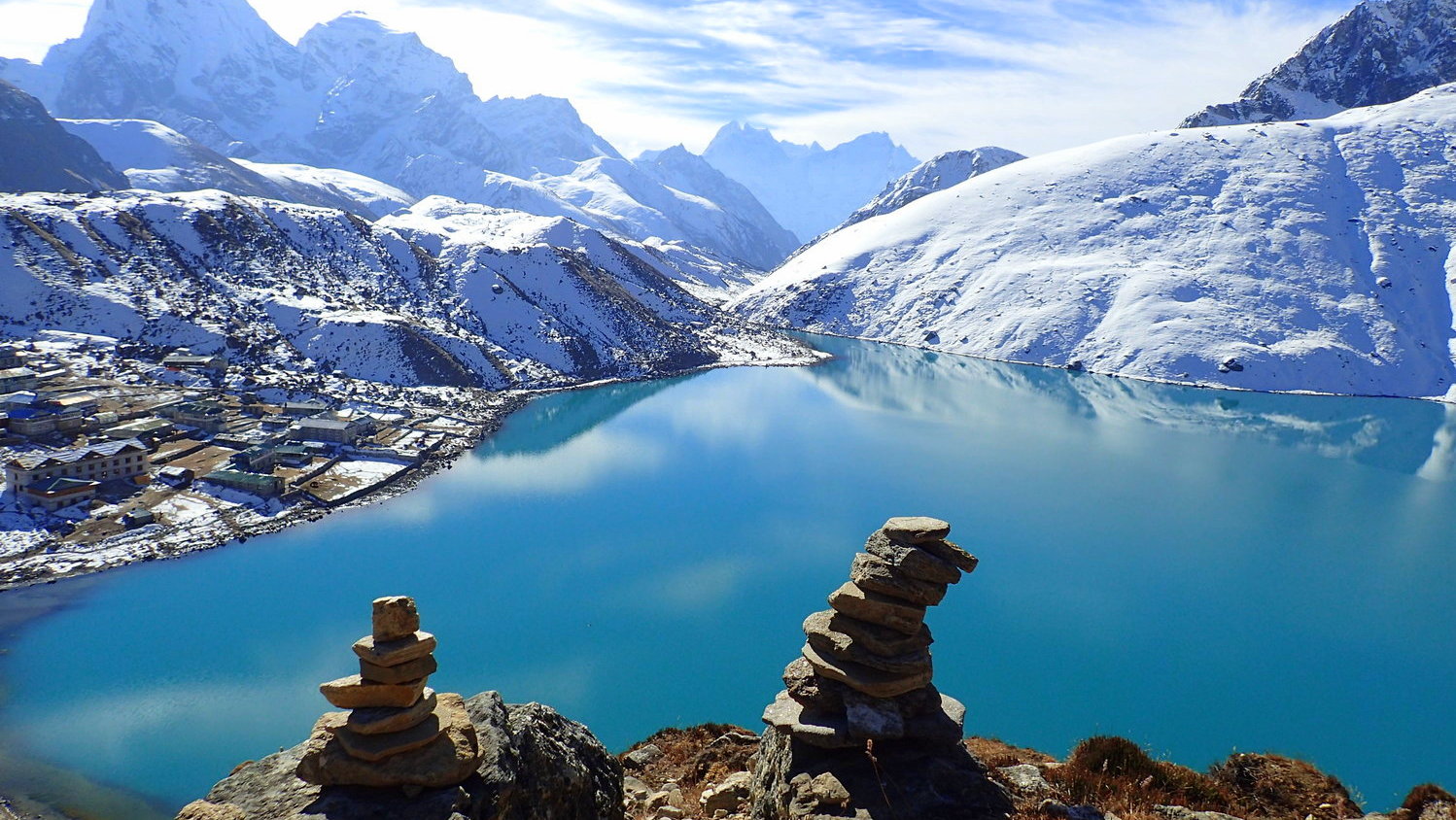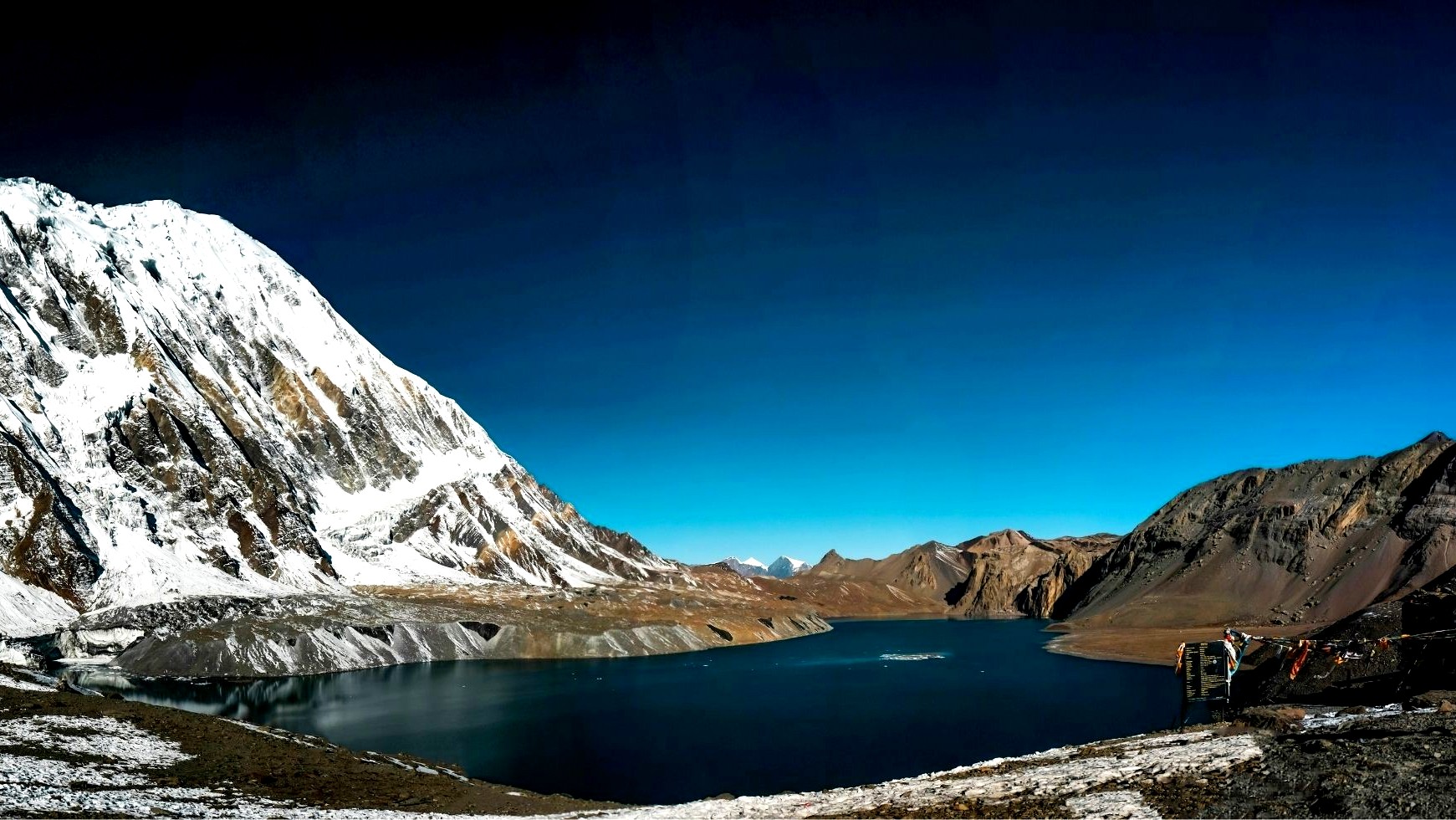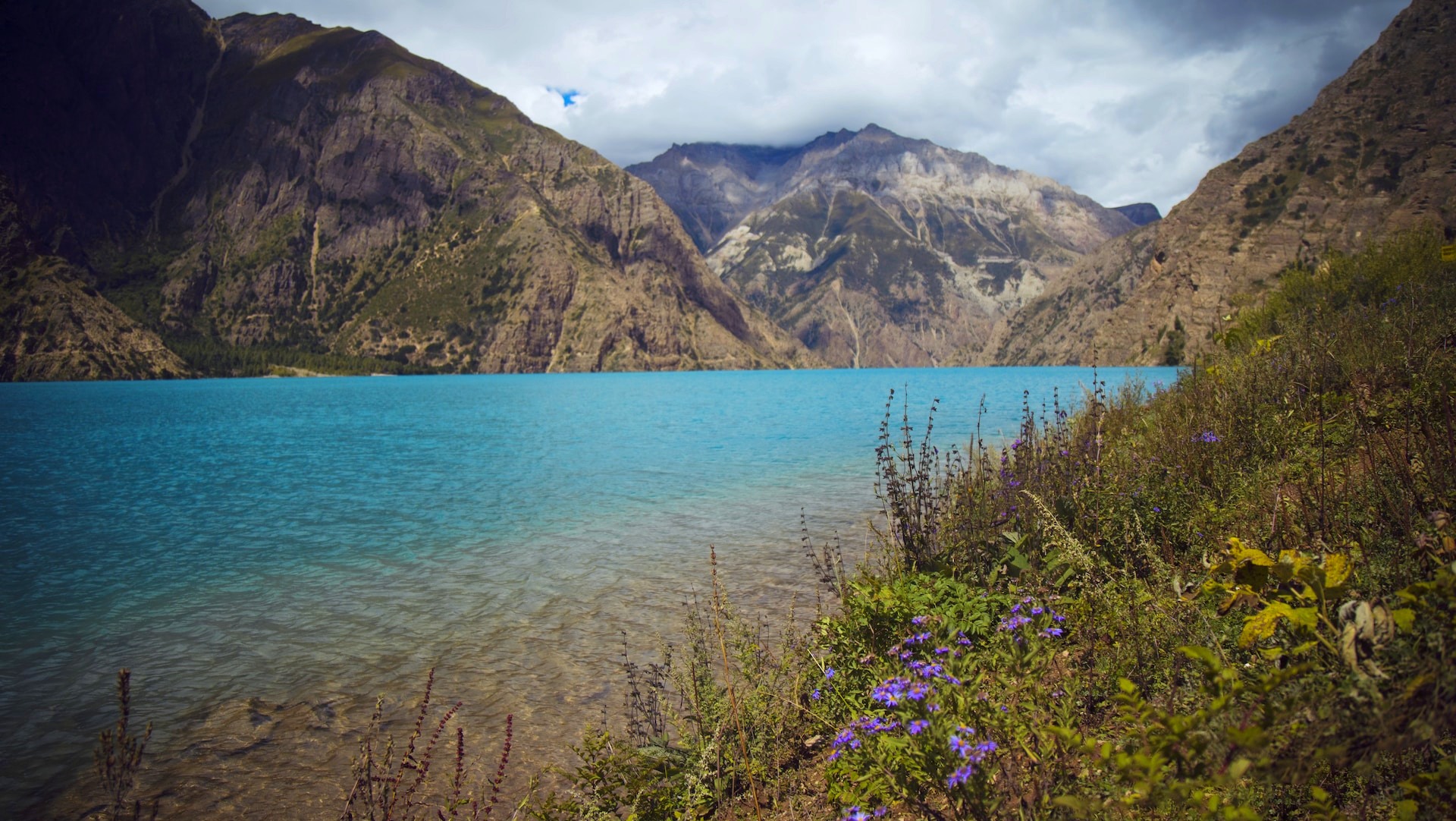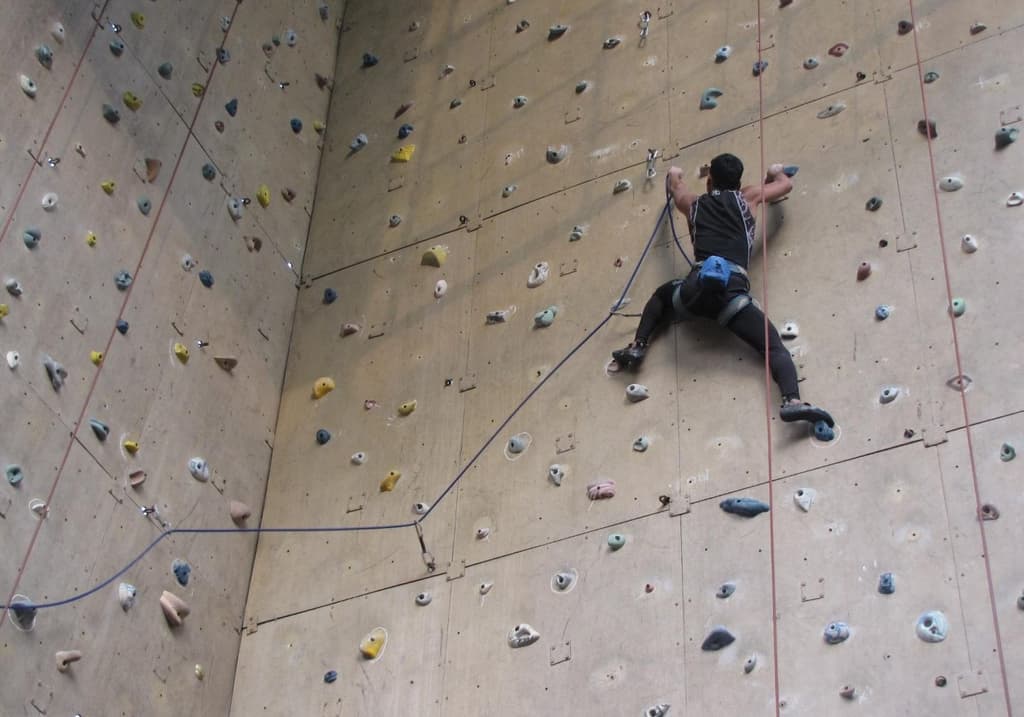Nepal is celebrated worldwide for its rugged mountain terrains and the iconic peaks of the Himalayas, but the country’s glacial lakes are equally captivating and offer unique adventures beside the trekking and climbing the region is famed for. These high-altitude wonders, ranging from the vibrant turquoise waters of Phoksundo Lake to the serene expanse of Gokyo Lakes, provide a picturesque setting for a variety of outdoor activities. The tranquility and natural beauty of these lakes make them a perfect destination for those looking to explore remote and pristine environments.

Each of these glacial basins tells a story of geological marvels and cultural significance, attracting not only adventure enthusiasts but also researchers and spiritual pilgrims. Whether you are looking to undertake a challenging trek, engage in wildlife observation, or simply enjoy the peace that comes from being in one of the most beautiful natural settings on earth, Nepal’s glacial lakes offer a sublime experience. Join us as we explore these icy jewels set against the backdrop of some of the world’s highest peaks, promising an unforgettable journey into the heart of the Himalayas.
At Luxury Holidays Nepal Pvt. Ltd., we are committed to offering unparalleled journeys to the stunning glacial lakes of Nepal. Our expertly curated tours ensure you experience the majestic beauty and serene landscapes of these icy wonders. With tailored itineraries that include guided tours, comfortable luxury accommodations, and attentive services, we make your adventure to places like Gokyo Lakes, Tilicho Lake, and Phoksundo Lake truly memorable. Trust us to make your trip to these high-altitude lakes in Nepal a treasured experience, filled with awe-inspiring views and enriching cultural interactions.
Gokyo Lakes
The Gokyo Lakes are a series of six spectacular high-altitude lakes situated in Nepal's Sagarmatha National Park, in the Everest Region. They are collectively the highest freshwater lake system in the world, lying between 4,700 and 5,000 meters above sea level. Here's a deeper look into the captivating Gokyo Lakes:

Location and Formation
The lakes are located in the Khumbu region, on the Nepalese side of Mount Everest. They are fed by glacial melt from the nearby mountains, including Ngozumpa Glacier, the longest glacier in the Himalayas. Each lake possesses its unique beauty, with vibrant blue and green waters that vividly reflect the surrounding snowy peaks.
The Lakes
- First Lake (Longpongo): Situated at 4,700 meters, this lake is where the Gokyo Trek begins to get scenic.
- Second Lake (Taujung Tsho): Known for its crystal-clear blue waters, this lake is just a short hike from the first.
- Third Lake (Gokyo Tsho): The largest and most famous of the six, it is where the small settlement of Gokyo is located, providing lodging and food for trekkers.
- Fourth Lake (Thonak Tsho): Further along the trail, this lake is larger and deeper, offering serene solitude.
- Fifth Lake (Ngozumpa Tsho): Offers the best views of Mount Everest and makes for a stunning vantage point.
- Sixth Lake (Gyazumpa Tsho): The most remote, it is less visited, providing a peaceful retreat.
Trekking to Gokyo Lakes
The trek to Gokyo Lakes is an alternative to the more crowded Everest Base Camp trek and offers some of the best views in the Everest region. Highlights of the trek include the ascent of Gokyo Ri (a peak above the third lake), from which trekkers can see four of the world’s six highest peaks: Everest, Lhotse, Makalu, and Cho Oyu.
Ecological and Cultural Importance
The Gokyo Lakes are not only a stunning natural wonder but also hold great religious significance to both Hindus and Buddhists, who consider them sacred. The lakes are an important habitat for aquatic life and provide a critical water source for the downstream communities. They are also part of an environmentally sensitive area, and efforts are ongoing to preserve their pristine nature.
Best Time to Visit
The best times to visit the Gokyo Lakes are from March to May and from September to November, when the weather is generally clear and the temperatures are mild, making the journey more enjoyable.
The trek to the Gokyo Lakes is a mesmerizing experience, offering a blend of natural beauty, challenging hikes, and cultural immersion in the heart of the Himalayas.
Tilicho Lake
Tilicho Lake is one of the highest lakes in the world, situated at an elevation of about 4,919 meters (16,138 feet) in the Manang district of Nepal. This stunning lake lies in the Annapurna range of the Himalayas and is known for its spectacular and dramatic scenery. Here’s a detailed look at Tilicho Lake:

Location and Access
Tilicho Lake is part of the Annapurna Conservation Area, one of Nepal's most well-known trekking regions. The lake collects the glacial melt of the entire northern slopes of Annapurna and Thorong Peak. It is generally reached from a branch off the main circuit of the Annapurna Base Camp trek, turning off at Manang and passing through the Khangsar Village and the Tilicho Base Camp.
Trekking to Tilicho Lake
The trek to Tilicho Lake is both challenging and rewarding, offering stunning views of the Annapurna massif, Gangapurna, Dhaulagiri, Manaslu, and Tilicho Peak. The route involves several days of hiking through diverse landscapes, including alpine forests, arid cliffs, and mountainous terrain.
- Starting Point: The common starting point is Besisahar, from where trekkers proceed along the Annapurna Circuit route before diverting to Tilicho Lake.
- Tilicho Base Camp: Before reaching the lake, trekkers often spend a night at Tilicho Base Camp to acclimatize and prepare for the final ascent to the lake.
- Final Ascent: The final leg to the lake involves a steep and sometimes snowy hike, which is best tackled early in the morning when the weather is most stable.
Significance and Beauty
Tilicho Lake is famed for its vivid turquoise waters, which contrast starkly against the barren, snow-covered mountains surrounding it. The lake has a significant place in Hindu mythology as it is believed to be the ancient Kak Bhusundi Lake mentioned in the epic Ramayana. The sage Kak Bhusundi is said to have first recounted the happenings of the Ramayana to Garuda near this lake.
Best Time to Visit
The optimal times to visit Tilicho Lake are during the pre-monsoon months of April to June and the post-monsoon months of September to November. During these periods, the weather is clearer, and the temperatures are more favorable for trekking.
Challenges and Considerations
The trek to Tilicho Lake is considered more difficult than many other treks due to its high altitude and the rough, often snowy, terrain. Acclimatization days are essential to avoid altitude sickness. Trekkers should be well-prepared with proper gear and possibly a guide or porter to navigate the challenging paths.
Visiting Tilicho Lake offers an unforgettable adventure for those looking for solitude, natural beauty, and a touch of spiritual significance, all wrapped up in one of the most breathtaking settings in Nepal’s high Himalayas.
Imja Tse Lake
Imja Tse Lake, more commonly referred to as Imja Lake, is a high-altitude glacial lake located in the Solukhumbu District of Nepal, within the Everest region. Situated at an elevation of approximately 5,000 meters (16,400 feet) above sea level, this lake is near the base of Island Peak, also known as Imja Tse, which enhances its scenic backdrop with dramatic mountain vistas.

Formation and Growth
Imja Lake is relatively young, having formed only in the 1950s due to the melting of the Imja Glacier. The lake has been expanding significantly since its formation, largely due to the accelerated melting of glaciers in the Himalayas, a process influenced by climate change. This expansion has raised concerns about potential glacial lake outburst floods (GLOFs), posing risks to downstream communities.
Trekking to Imja Lake
The trek to Imja Lake typically forms part of a broader trekking itinerary in the Everest region, often combined with treks to Everest Base Camp or climbs of Island Peak. The journey to Imja Lake involves traversing rugged and beautiful landscapes filled with Sherpa villages, monasteries, and stunning views of some of the world's highest peaks, including Lhotse, Ama Dablam, and, of course, Everest.
- Route: The usual route to Imja Lake starts from Lukla, following the trail to Everest Base Camp through Namche Bazaar and Tengboche. From Dingboche or Ch
- hukung, trekkers divert towards Imja Lake, venturing into less traveled paths.
- Chhukung Village: As the last major settlement before reaching Imja Lake, Chhukung serves as an important acclimatization and preparation point for trekkers and climbers heading to both the lake and Island Peak.
Ecological and Geographical Significance
Imja Lake serves as a critical study area for scientists and researchers monitoring the impacts of global warming on the Himalayan glacial bodies. The lake's expansion is closely watched as an indicator of climate change effects in high-altitude ecosystems.
Activities and Attractions
- Trekking: The area offers challenging trekking routes with breathtaking panoramic views of the Himalayan giants.
- Climbing: For adventure seekers, climbing the nearby Island Peak presents an exciting opportunity to combine a high-altitude trek with a peak climbing experience.
- Photography and Nature Studies: The unique landscape around Imja Lake, with its combination of ice, rock, and water, offers spectacular opportunities for photography and environmental studies.
Best Time to Visit
The best periods to visit Imja Lake are during the spring (March to May) and autumn (September to November) seasons. During these times, the weather is generally clear, providing excellent conditions for trekking and clear views of the surrounding peaks.
Considerations for Trekkers
Due to its high altitude and remote location, trekkers should be well-prepared for sudden weather changes and potential altitude sickness. It is advisable to undertake this trek with proper acclimatization, suitable trekking gear, and preferably guided by someone who knows the area well.
Visiting Imja Lake is an enriching experience that combines adventure with the awe-inspiring beauty of the Himalayas, providing trekkers with a profound sense of the dynamic natural processes at work in these towering mountains.
Phoksundo Lake
Phoksundo Lake is one of Nepal's most stunning and picturesque natural treasures, located in the Dolpa District within the Shey Phoksundo National Park. At an elevation of about 3,611 meters (11,849 feet) above sea level, it is renowned for its magnificent deep blue and emerald green waters, surrounded by steep, rocky cliffs and dense forests. This lake represents a perfect blend of natural beauty and cultural significance, offering a serene and almost mystical experience to its visitors.

Location and Access
Phoksundo Lake is the deepest lake in Nepal, known for its pristine and untouched beauty. It is situated in the remote and isolated region of Dolpa, which is less frequented by tourists due to its accessibility challenges. The usual access to Phoksundo Lake involves a flight from Kathmandu to Nepalgunj followed by another flight to Juphal. From Juphal, trekkers embark on a few days' trek through beautiful landscapes and traditional villages to reach the lake.
Trekking to Phoksundo Lake
The trek to Phoksundo Lake is as memorable as the destination itself, characterized by its scenic and diverse trails. The journey typically goes through several traditional villages, where trekkers can witness the authentic lifestyle of the local Dolpa culture. The trek does not involve high passes, which makes it somewhat less strenuous than other high-altitude treks in Nepal, yet it offers equally stunning natural beauty.
- Shey Phoksundo National Park: The trek traverses this protected area, known for its rich biodiversity, including snow leopards, Himalayan thars, and blue sheep.
- Ringmo Village: A traditional Tibetan village near Phoksundo Lake, where trekkers often spend a night, exploring the local culture and the Bon Monastery nearby.
Features and Attractions
- Natural Beauty: The turquoise and sapphire waters of the lake, set against the backdrop of snow-capped peaks and lush greenery, create a spectacular visual display.
- Waterfall: The lake's outlet forms the highest waterfall in Nepal, a dramatic and powerful spectacle that adds to the area's mystique.
- Flora and Fauna: The national park around the lake is home to many endangered species and a diverse range of plants and animals, making it a fantastic spot for wildlife watching.
Cultural Significance
Phoksundo Lake holds significant spiritual importance for the local Bon religion, an ancient pre-Buddhist faith. The lake and its surroundings are considered sacred, with several gompas (monasteries) and stupas situated around it. This adds a profound cultural layer to visits, providing insights into the spiritual traditions and practices that have been preserved for centuries.
Best Time to Visit
The optimal times to visit Phoksundo Lake are during the spring (April through June) and autumn (September through November) months. These periods feature stable weather, clear skies, and moderate temperatures, ideal for trekking and experiencing the natural beauty of the lake and its surroundings.
Considerations
Given its remote location and the basic facilities available along the trek, visitors to Phoksundo Lake should be prepared for a true wilderness experience. Proper planning, suitable trekking gear, and a flexible attitude are essential for enjoying what is undoubtedly one of the most scenic and enriching outdoor adventures in Nepal.
Phoksundo Lake offers a unique opportunity to immerse oneself in an untouched natural environment, far from the well-trodden tourist paths, making it a cherished destination for those seeking tranquility and a deep connection with nature.
Rara Lake
Rara Lake is a pristine jewel nestled in the remote northwestern highlands of Nepal, within Rara National Park. Known as the largest lake in Nepal, it is famed for its breathtaking beauty and tranquil, clear waters that reflect the surrounding snow-capped Himalayan peaks. The lake is located at an altitude of about 2,990 meters (9,810 feet) and spans an area of almost 10.8 square kilometers.

Location and Access
Rara Lake is situated in the Mugu District of Karnali Province, one of the least accessible and developed regions in Nepal, contributing to the area's untouched and pristine nature. The journey to Rara Lake involves a flight from Kathmandu to Nepalgunj, followed by another flight to either Talcha Airport or Jumla, from which trekkers embark on a several-day hike through remote landscapes and culturally rich villages.
Trekking to Rara Lake
The trek to Rara Lake is known for its scenic beauty and the opportunity to experience the tranquil rural life of the Karnali region. The trek routes are less crowded, offering a peaceful and intimate experience with nature. The paths wind through lush forests, alpine meadows, and along mountain ridges, providing stunning views and a chance to witness the local wildlife.
- Rara National Park: The park is home to the lake and offers a haven for wildlife, including the Himalayan black bear, leopard, Himalayan tahr, and the endangered red panda. The park's thick forests and high-altitude wetlands create a biodiverse ecosystem.
- Murma Top: For those looking to capture panoramic views of the lake and the surrounding mountains, a hike to Murma Top is highly recommended. This vantage point offers arguably the best views of Rara Lake and its majestic setting.
Features and Attractions
- Crystal Clear Waters: The lake is famous for its clear blue waters, which vary in color with the seasons and the time of day, from deep blue to turquoise to emerald green.
- Flora and Fauna: Rara National Park has a rich biodiversity, including a variety of flora and fauna, some of which are endemic to the region. The area around the lake blooms with rhododendrons during the spring.
- Bird Watching: The lake is a significant bird-watching site, with over 214 species of birds recorded, including the Himalayan monal and Danphe.
Cultural Significance
Rara Lake is not only a natural wonder but also a place of cultural importance to the local communities. Various local festivals and traditions are observed around the lake, providing visitors with a glimpse into the rich cultural heritage of the region.
Best Time to Visit
The best times to visit Rara Lake are during the spring (April to June) and autumn (September to November) months. These periods offer the most favorable weather conditions for trekking and enjoying the natural beauty of the lake. The skies are generally clear, providing excellent views of the surrounding landscapes.
Considerations
Visiting Rara Lake requires a good level of fitness and preparation due to the altitude and the length of the trek. The facilities along the way are basic, emphasizing the need for proper planning and self-sufficiency during the trek.
Rara Lake offers a unique and unforgettable experience for those seeking solitude, natural beauty, and an authentic encounter with Nepal's rural highlands. It is a perfect destination for nature lovers, adventure seekers, and those looking to escape the more crowded trekking routes in Nepal.
Tips for visiting Glacial Lakes of Nepal
Visiting the glacial lakes of Nepal is a remarkable experience that combines adventure, natural beauty, and cultural immersion. However, due to the remote and rugged nature of these destinations, it’s important to be well-prepared. Here are some essential tips for visiting the glacial lakes of Nepal:
- Acclimate Properly: Many of the glacial lakes in Nepal are situated at high altitudes. To avoid altitude sickness, it’s crucial to acclimatize properly. Plan your itinerary to include gradual ascents and rest days, especially if you're trekking to lakes above 4,000 meters, like Gokyo Lakes or Tilicho Lake.
- Hire a Local Guide: Navigating the trails and understanding local customs is much easier with the help of a local guide. Guides not only enhance safety but also enrich your trekking experience with their knowledge of the local flora, fauna, and geography.
- Pack Appropriately: Weather in the high-altitude areas of Nepal can change rapidly. Pack layers of clothing to accommodate varying temperatures, along with a waterproof jacket and good quality trekking boots. Don’t forget essentials like a sun hat, sunscreen, sunglasses, and a durable water bottle.
- Obtain Necessary Permits: Most trekking routes to glacial lakes in Nepal require permits, such as the TIMS (Trekkers' Information Management System) card and national park or conservation area permits. Ensure you have all necessary permits organized before your trek.
- Respect Local Customs: Many glacial lakes in Nepal are considered sacred by local communities. Always show respect by following local customs and guidelines, such as not swimming in or polluting the lakes.
- Travel Insurance: Make sure you have adequate travel insurance that covers high-altitude trekking and emergency evacuation. This is crucial as trekking in remote areas carries inherent risks.
- Stay Hydrated: Drink plenty of water to stay hydrated. High altitudes can dehydrate you more quickly than at sea level, and staying hydrated helps mitigate the effects of altitude sickness.
- Plan for Communication: Many remote areas around the glacial lakes may not have reliable mobile phone coverage. Consider renting a satellite phone if you expect to be out of range or inform someone of your itinerary and expected return.
- Be Prepared for Emergencies: Carry a basic first aid kit equipped for trekking, including items for altitude sickness, blisters, cuts, and common ailments. Know the symptoms of altitude sickness and be prepared to descend if they intensify.
- Leave No Trace: Preserve the natural beauty of the glacial lakes by following the “Leave No Trace” principles. Pack out everything you bring in, dispose of waste properly, and be considerate of wildlife and plants.
By following these tips, your visit to the glacial lakes of Nepal can be a safe, enjoyable, and unforgettable adventure.
Visiting the glacial lakes of Nepal offers a unique blend of breathtaking natural beauty, thrilling adventure, and rich cultural encounters. By preparing adequately, respecting local customs, and following responsible trekking practices, you can ensure a rewarding and memorable experience. These pristine, high-altitude lakes provide not only a visual spectacle but also a profound connection with nature that resonates long after the journey ends. Whether you are an avid trekker or a nature lover, the glacial lakes of Nepal are destinations that truly embody the spirit of exploration and discovery.
FAQs for the Glacial Lakes of Nepal
Q: What is the best time of year to visit the glacial lakes in Nepal?
A: The best times to visit the glacial lakes in Nepal are during the spring (March to May) and autumn (September to November). These months offer stable weather, clear skies, and the most favorable conditions for trekking.
Q: Do I need a guide to trek to the glacial lakes in Nepal?
A: While it's possible to trek independently, hiring a local guide is highly recommended for safety, navigation, and gaining deeper insights into the local culture and environment. Guides can also assist in managing logistics and dealing with any emergencies that may arise.
Q: Are there any permits required for trekking to the glacial lakes?
A: Yes, you will typically need a TIMS (Trekkers' Information Management System) card and a permit for the specific national park or conservation area you are visiting. These can be obtained through trekking agencies or at the relevant tourism offices in Nepal.
Q: What should I pack for a trek to the glacial lakes?
A: Essential items include layered clothing, a waterproof jacket, good quality trekking boots, a sun hat, sunscreen, sunglasses, a durable water bottle, and a first aid kit. Also consider packing a sleeping bag and a map or GPS device.
Q: How do I prevent altitude sickness while trekking to high-altitude lakes?
A: To prevent altitude sickness, acclimatize properly by ascending slowly, taking rest days to adjust to the elevation, staying hydrated, and avoiding alcohol and tobacco. Recognize the symptoms of altitude sickness and be prepared to descend if they occur.
Q: What are the accommodations like on the trek to glacial lakes?
A: Accommodations can vary from basic teahouses and lodges to camping, depending on the trekking route and remoteness of the area. Facilities tend to be more basic as you reach higher altitudes.
Q: How long does it take to trek to the glacial lakes?
A: The duration of treks can vary widely depending on the specific lake and route. Treks can range from a few days to over two weeks, so it’s important to review your chosen trek's itinerary carefully.
Q: Is it safe to drink the water from the streams during the trek?
A: It is not recommended to drink directly from streams as the water may be contaminated. Use water purification tablets, a water filter, or boiling to ensure the water is safe for drinking.
Q: Can I swim in the glacial lakes?
A: Swimming in glacial lakes is generally not recommended due to the extremely cold water temperatures and the cultural sensitivity of the lakes. Many lakes are considered sacred, and swimming might be seen as disrespectful.
Q: How can I respect local customs and traditions while visiting?
A: Show respect by dressing modestly, asking for permission before taking photographs of people, not touching religious artifacts, and adhering to local guidelines and restrictions, especially around sacred sites.
If you need any further information, please contact us, Email: at [email protected], Phone: +977- 985 100 5129 (WhatsApp)




